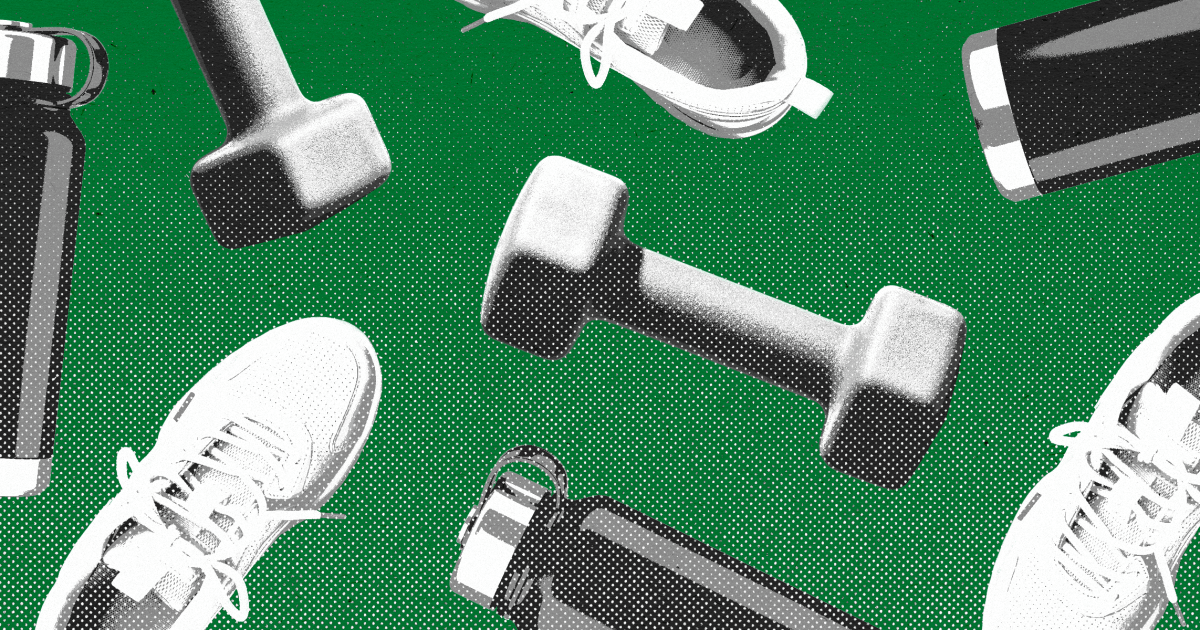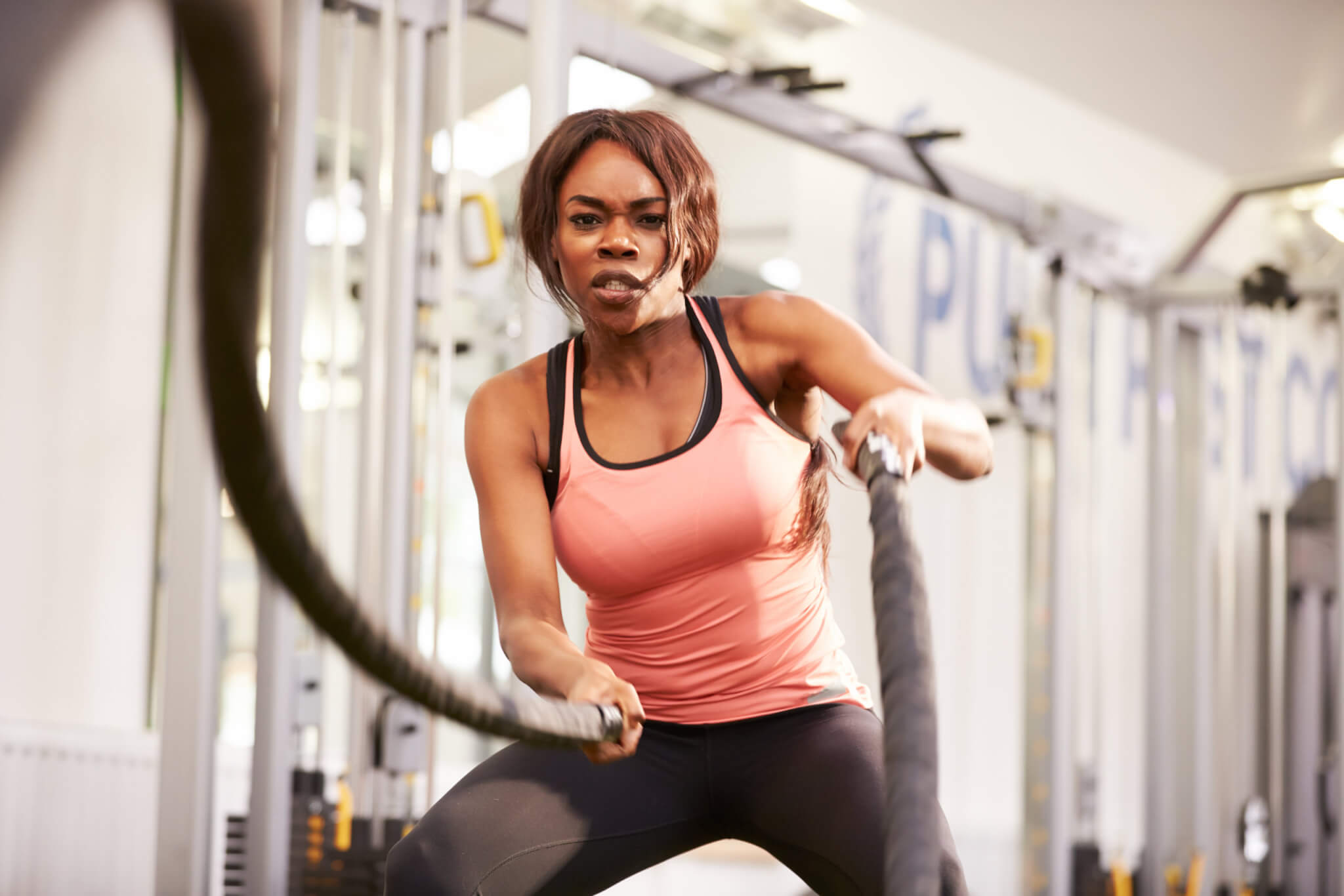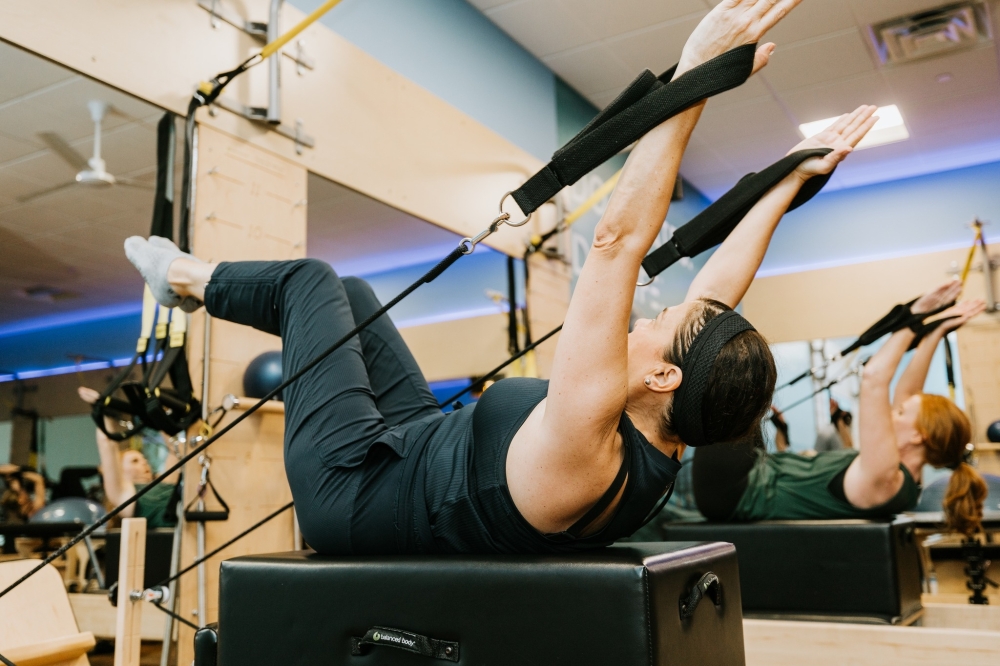Fitness
Philisa Abafazi Bethu opens outdoor gym for women sponsored by Bolt

According to the centre, the outdoor gym is equipped with easy-to-use fitness equipment, providing women an accessible place to improve their physical well-being. Philisa Abafazi Bethu, known for its dedication to combating GBV and supporting survivors, believes that physical fitness is crucial to empowering individuals and improving their mental health.
Lucinda Evans, founder of Philisa Abafazi Bethu, says, “We are most grateful that the business sector and, in particular, the ride-hailing transport service Bolt share the same sentiments and align with our vision; the need for this safe space where the most vulnerable in our communities can freely participate in a healthier lifestyle. We invite other private sector businesses to support our GBV programmes like ours.”
According to the latest statistics released by the South African Police Service (SAPS), GBV cases have reached an alarming level. It is reported that between July and September 2022, over 13 000 women were victims of assault to cause grievous bodily harm. This is while 1 277 women were victims of attempted murder, and 989 women were murdered during this reporting period, says the centre.
Takura Malaba, regional manager of East and Southern Africa, says, “These numbers are not just statistics; they represent the lives of our mothers, sisters, daughters and friends affected by this pervasive issue.”
“As responsible corporate citizens, we must take a stand and actively work towards making the world a better place for women by providing them safe spaces to do simple tasks like exercising. We firmly believe that working together can make a tangible difference in the fight against GBV. Together, let us create a society where everyone, especially women, can live free from the fear of violence and harassment,” adds Malaba.
The centre concludes that the formal opening of the outdoor gym took place on Saturday, 25 November at the facility. It was well attended by young and older women in the community, who were glad to have a place where they could feel comfortable exercising.
For more information, visit www.philisaabafazi.org. You can also follow the Philisa Abafazi Bethu Women Centre on Facebook or on Instagram.
Philisa Abafazi Bethu opens outdoor gym for women sponsored by Bolt Philisa Abafazi Bethu Outdoor gym Gender-Based Violence GBV 16 Days of Activism Gym Gym for women Outdoor gym for women Bolt Bolt gym Women’s gym Women’s gym Cape Town

Fitness
Donald Trump Fitness: Can His Golf Workouts Replace the Gym? Explore Trump’s Golf Exercise Routine and Health Benefits

Donald Trump’s fitness routine centres around golf, not the gym. Let’s know how his golf workouts burn calories, improve health, and whether golf can truly replace traditional exercise.
When you consider Donald Trump, you probably don’t think of fitness. Yet, one thing that he always swears by is golf. Beyond being a hobby, Trump uses golf in his leisure a great deal, as a way to stay active, socialise, and keep his body in motion. But here’s the big question: Can Trump’s Golf Workouts Replace the Gyms? Let’s explore his regimen and discover the unexpected health benefits of golf as a form of exercise.
Does Donald Trump Work Out At The Gym?
Unlike several celebrities or political figures who are stuck to a gym regimen, Donald Trump is not known for pumping iron or running on treadmills. Instead, it is his fitness in playing golf that comes first. Trump is said to spend hours of his day at the golf course, walking around, swinging and being active while he is managing both business and leisure conversation. While it may not sound like a real workout, golf requires you to move around, control your posture and your coordination all the time, making it a low-impact exercise for burning calories.
How Many Calories Does Playing Golf Burn?
Yes, and here’s why. On average:
- Walking 18 holes may cover 4 – 6 miles.
- The number of calories burned by carrying clubs or pushing a cart is 600-1,000 calories per round.
- A golf cart even allows golf players to burn up to 300-450 calories because of swinging, short walks, and postural control.
And when you’re an early riser, a workaholic and a frequent visitor to the course, as Donald Trump is, that calorie burn adds up, making golf something of a fitness powerhouse.
Health Benefits Of Trump’s Golf Routines
People grossly underestimate golf, but Trump’s steady play grants him some wrist flexing fitness advantages:
1. Improves Heart Health
Walking the course and swinging regularly provides greater blood circulation and makes the cardiovascular system stronger.
2. Increases Flexibility and Balance
The golf swing to develop: Spine, shoulders, hips, and core. After a certain period of time, repeating the same movements helps your body gain flexibility and balance.
3. Improves Muscles Without Heavy Lifting
While not weight training, swinging a golf club develops arms and shoulders and core muscles.
4. Reduces Stress
Golf is an outdoor game, and it is played in often lush and calm surroundings. For Trump, it’s also a break from the pressures of politics and business, mentally.
5. Promotes Longevity
Studies show that golfers live longer on average due to the combination of moderate physical activity and the provision of relief.
Can Golf Replace The Gym?
This is where opinion becomes polarised. For Donald Trump, golf might be sufficient to get a workout, but for most people, the gym allows for targeted exercises on strength training and cardio intensity which golf simply cannot match. However, golf is an excellent option for those who hate gyms but still desire a regular workout. The combination of walking, swinging, and being outdoors means that this is an effective low-impact workout.
Golf Smart: Maximise Your Workout
If you want to follow in Trump’s footsteps-but maximise the amount of fitness benefits you are getting-try these:
- Use your feet to walk the course rather than use a cart.
- Carry or use a push cart for your own clubs.
- Always warm up before playing by stretching.
- Galea does weight exercises, such as squats or push-ups, after golf to try to balance with force.
While Donald Trump is not known for lifting heavy weights or running marathons, his golf workouts keep him active and in shape in a sustainable way that is both fun and engaging. While a game of golf cannot completely take the place of a workout in the gym, it proves that fitness doesn’t always need to come from traditional workouts.
Don’t Miss Out on the Latest Updates.
Subscribe to Our Newsletter Today!
Fitness
Michael Chiklis Had to Get in Football Shape Well After 50. Here’s How He Did It.

MICHAEL CHIKLIS HAS played tough cops in shows like The Shield and a granite-strong superhero in The Fantastic Four, but the most difficult physical challenge the actor has faced over a long career might just have been playing a regular, real-life guy. That regular guy did something remarkable, however—Chiklis’s most recent film, The Senior, is about 59-year-old Mike Flynt, who suited up for college football as the oldest player in the NCAA.
Stepping into the shoes of this character wasn’t a stretch for Chiklis, who is now 62—he says he was the captain of his football team in high school, so he has the background—but getting in shape for the film well after 50 was a trial. The actor did “about 90 percent” of the football action on screen, so he needed to be able to do more than just look the part. He had to be able to move, too.
How did he do it? A dedicated strength and conditioning plan (and plenty of focused warm-up and mobility). Chiklis stacked up full-body training sessions to prep his body to get into football shape. He did more than just gym training, however; Chiklis says he would often spent 40 minutes in the pool jogging and walked 10,000 steps to raise up his general activity levels.
Chiklis says that overall, the most important part of his training was preventing injury. His priorities are being healthy and strong—both for his career, and for the stage he’s at in life. “If you’re an older person and you’re interested in keeping your body strong and being fit, then listen to yourself,” he says. “Don’t get pulled into the whole machismo crap.”
Check out Chiklis’s breakdown of his routine here.
Michael Chiklis’s The Senior Workout
Lower Body Exercises
Reps or 45 seconds per exercise
Suitcase Squat
Dumbbell Romanian Deadlift
Dumbbell Lateral Lunge
Dumbbell Goblet Squat
Push and Pull Movements
4 rounds of 30 to 40 second intervals
Pushups
Dumbbell Floor Press
Dumbbell Row Variations
Arm and Shoulder Circuit
4 sets of 45 seconds per exercise
Dumbbell Curls
Arnold Press
Triceps Kickbacks
Want more celebrity workout routines? Check out all of our Train Like videos.
Brett Williams, NASM-CPT, PES, a senior editor at Men’s Health, is a certified trainer and former pro football player and tech reporter. You can find his work elsewhere at Mashable, Thrillist, and other outlets.
Fitness
How Many Days a Week Should You Do HIIT? A Trainer Weighs In

For some people trying to lose weight, they might find that they’ve plateaued and wonder if there is anything they can add to their workout routine to jumpstart their metabolism. Enjoying a high-intensity interval training (HIIT) workout a handful of days per week can be just the thing that works.
“If you’re looking to be more explosive, athletic or build muscle, HIIT workouts are best suited to help you do that,” Rafique “Flex” Cabral previously told TODAY.com.
Trainer Tip of the Day: HIIT Workouts 3 Days a Week Boosts Metabolism
A HIIT workout focuses on brief moments of super-intense activity with rest periods sprinkled between the exercise. While the high energy exertion occurs in quick bursts — often 30 to 45 seconds, with rest in between — it demands more of the muscles. This type of exercise builds and maintains lean muscle mass, which can help with weight loss.
“Maintaining a routine that involves HIIT training three to four times a week will help compound that post-workout effect on your metabolism,” Cabral said.
HIIT sparks something called excess post-exercise oxygen consumption (EPOC), which enables people to burn calories even after their workout ends. The American Council on Exercise says that HIIT works best for kickstarting EPOC.
“You will produce an after-burn effects with 25% more calories burned post-workout compared to going for a walk or a run,” Lisa Reed, a performance coach and owner of Lisa Reed Fitness, previously told TODAY.com.
Why It Matters
HIIT’s impact on people’s metabolism lingers for some time — Reed estimates it bolsters metabolism up to 10% for three days after a workout.
Having lean muscle mass helps with weight loss but also promotes healthy aging. People with more lean muscle are less likely to experience falls and engage in their daily activities with ease.
How to Get Started
Dedicating even 20 minutes three times a week to a HIIT workout can lead to boosted metabolism and weight loss. Workouts can be customized to exercise preference and the equipment people have handy.
“You can also keep things interesting by switching up the sequence or swapping out different exercises from strength to high-intensity movement,” Reed says. “HIIT workouts are an excellent way to increase your workout intensity in a short amount of time — 20 minutes or less.”
TODAY’s Expert Tip of the Day series is all about simple strategies to make life a little easier. Every Monday through Friday, different qualified experts share their best advice on diet, fitness, heart health, mental wellness and more.
-

 Finance1 week ago
Finance1 week agoReimagining Finance: Derek Kudsee on Coda’s AI-Powered Future
-

 World6 days ago
World6 days agoSyria’s new president takes center stage at UNGA as concerns linger over terrorist past
-
North Dakota1 week ago
Board approves Brent Sanford as new ‘commissioner’ of North Dakota University System
-

 Technology6 days ago
Technology6 days agoThese earbuds include a tiny wired microphone you can hold
-

 Culture6 days ago
Culture6 days agoTest Your Memory of These Classic Books for Young Readers
-

 Crypto6 days ago
Crypto6 days agoTexas brothers charged in cryptocurrency kidnapping, robbery in MN
-

 Crypto1 week ago
Crypto1 week agoEU Enforcers Arrest 5 Over €100M Cryptocurrency Scam – Law360
-

 Rhode Island1 week ago
Rhode Island1 week agoThe Ocean State’s Bond With Robert Redford


















